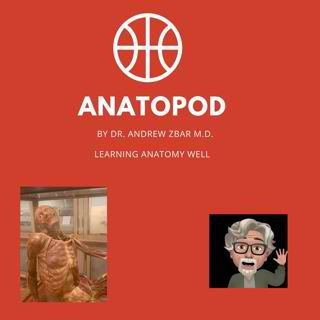
THE ANATOMIZATION OF ART:PART 1 - THE DISSECTING HABITS OF LEONARDO AND MICHELANGELO
Jaksokuvaus
PART 1: The Anatomization of Art: Anatomic Realism and the Dissecting Habits of Leonardo and Michelangelo This is the next in the History of Anatomy section of ANATOPOD…. It discusses the differences between the personalities of Leonardo da Vinci (1452-1519) and Michelangelo Buonarroti (1475-1564) and how these differences governed the use of the cadaver in the betterment of their art. Part 1 begins the discussion on Leonardo and his world view (his Weltanschauung) as well as the inspirations to his work by the goldsmith Lorenzo Ghiberti (1378-1455) and the architect of the Reniassance Leon Battista Alberti (1404-1472). If one imagines art and anatomy like a Venn diagram, the subsets under consideration would only minimally overlap and caught within the penumbra of that intersection are the relatively rare examples of artists whom we are fairly certain dissected the cadaver (Antonio Pollauiolo, Luca Signorelli, Leonardo, Michelangelo, Rosso Fiorentino, Jacopo da Pontormo, Jacopo Tintoretto, Vincenzo Danti, Alessandro Allori, Pietro Francavilla). On the other side are the anatomists who illustrated their own work (Frederik Ruysch, Antonio Scarpa, John and Charles Bell, Henry Vandyke Carter, Frank Netter). Artist and art chronicler Giorgio Vasari (1511-74) singled out his favoured artisans Leonardo and Michelangelo, both symbols of a perfected skill, one in perspective and the other in marble whose brief was not only the emulation of the visible Nature but who were men capable of surpassing Nature herself. Both artists would argue through their working lives over the supremacy of their favoured medium (painting or sculpture) but regardless of which reigned as the better channel conveying beauty, both had embodied the finest executions of the human form with an almost Divine grace. Part 2 differentiates how Michelangelo dissected through need but Leonardo because of passion. Michelangelo dissected his bodies for their myology but obsessed with function as much as form Leonardo examined them for their own sake. Leonardo’s anatomical imagery seems to have been produced more for his own edification than anything else. Michelangelo, however, used anatomy as a democratizing force. No less touched by a Divine Grace, the sculpted products that profited by his dissections of the corpse were unguarded tactile encounters specifically designed for the masses.